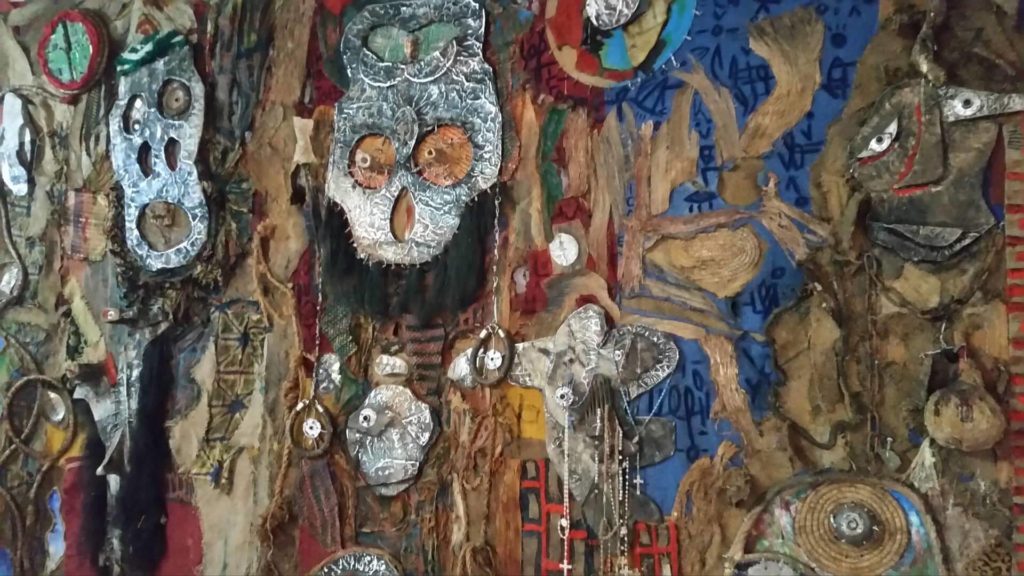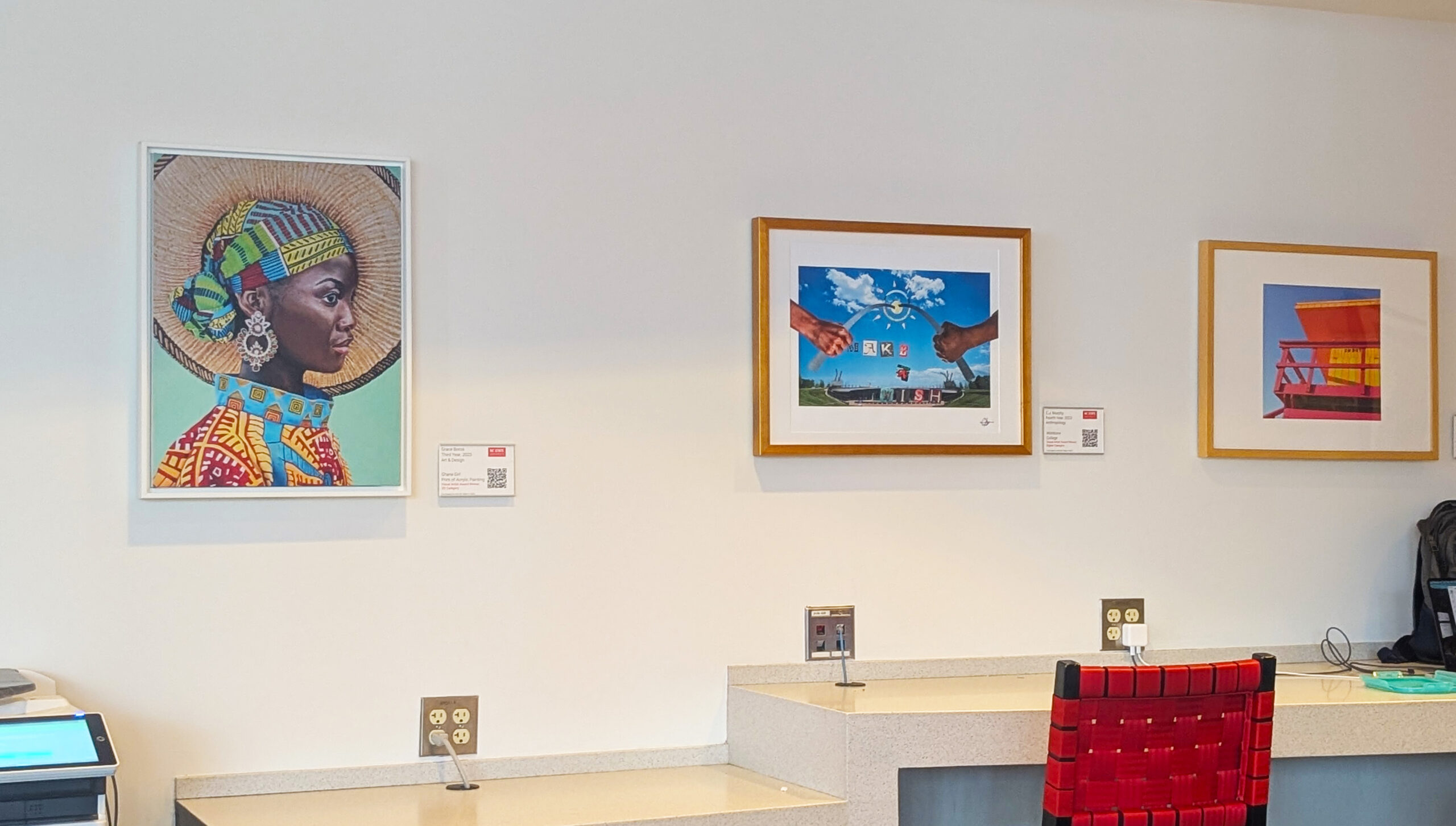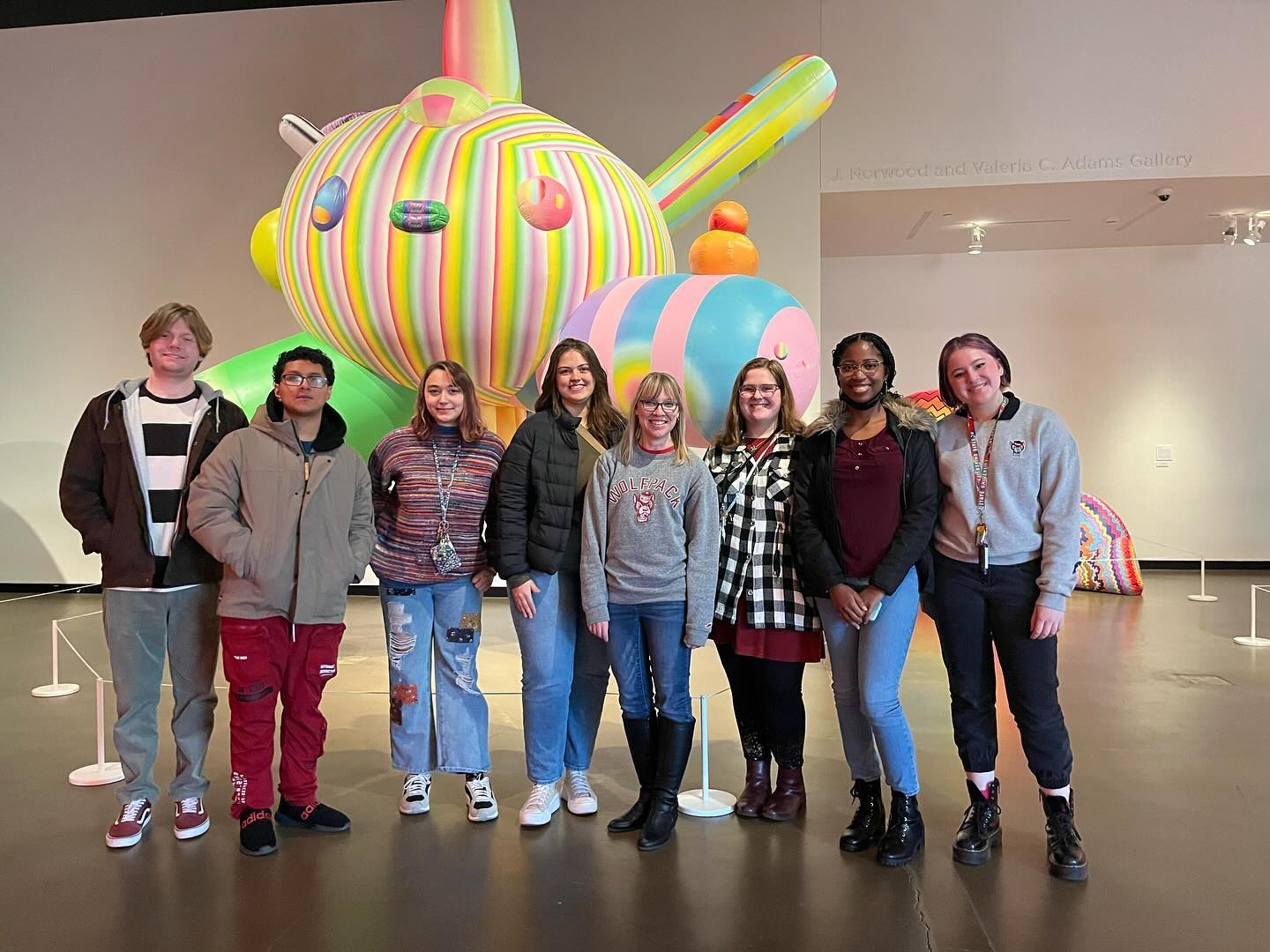Artist in Residence Series: New Sculptural Forms and an Ecological Discourse
Article by Rebekah Middleton, Senior, Philosophy Major | Arts Outreach & Engagement Intern

Jean Michel Dissake is a mixed media artist from Yaoundé, Cameroon, who incorporates recycled and found materials into his work and places heavy focus on the philosophical themes of unity with nature and the eternal recurrence of the human spirit. He has spent two weeks at NC State as part of the Arts Village and Gregg Museum of Art & Design artist residency series, during which several students have been given the opportunity to collaborate with him. Together, Dissake and NC State students created multiple pieces of artwork to be displayed at the Gregg Museum of Art & Design Thursday, February 14 at 6:00 p.m. I had the opportunity to observe Dissake as he spoke during an Arts Village Forum, as well as interview a core group of students who joined him in art making, on nature walks and at the Durham Scrap Exchange.
During an Arts Village event, The Arts Forum, on the first day of his residency, Dissake discussed some of his pieces, his background as an artist, and his creative vision. One of the essential ideas exhibited in his work is the concept of “the vine.” The vine, for Dissake, is life – just as vines share vital resources between the earth and the trees, so do human veins carry blood throughout our bodies. Dissake says that “the message of the vine is love and peace; it is DNA, it is the fundamental basis of our being where we are all the same.” His mixed media art, combining modernity with elements of the earth, searches for the balance between technology and nature. He blends pieces from old computer switchboards and rubber tire inner tubes with termite dust and bovine jaw bones, most of them collected from the Mongo River banks or in the forest near his studio.
At the forum, Jean Michel shared some of his favorite works, highlighting their significance to him as well as their ecological relevance. One piece, Pandomese, celebrates the tree of life, and serves as a link between the past, the present, and the harboring of a vision for the future. Dissake also displayed images from a drama he wrote and directed, called The Rebirth of Nature. The work takes place in a forest and explores the harmony of what Dissake calls the four sources of life – air, water, fire, and dust.

Kerria Weaver, a sophomore studying English literature, served as one of the student artists who worked closely with Jean Michel throughout his residency. She, along with 18 other students, attended special working sessions in the Gregg Museum of Art & Design as well as off-campus excursions to both Wendell Park and the Scrap Exchange for materials collection.
Weaver described the nature walk as “a very liberating experience,” where she and her colleagues collected bird feathers, tree branches, and mosses. “As we were collecting things, we remembered stuff from our past and talked about how those things felt to us,” Weaver said. She described Dissake’s creative process while working with the students, going into detail about how he views “ordinary objects in an extraordinary way.”

Jean Michel’s goal in traveling to new places is to find the meaning of life through learning about other cultures, stating that he is drawn to vibrations of things undiscovered. When he visits a place, he says he can sometimes feel the physical pull of materials on his heart, calling to him to be repurposed. The subtlety of this interaction is why Dissake finds it important for one to open all of their senses when creating art, as it allows the human spirit to freely communicate with the vibrations of the earth.
When asked about how Dissake personally relates to his artwork, he describes himself as a human agent interfacing with the modern world. “A human today is like a mixed-media sculpture. Yes, I am African, but I am in dialogue with other cultures, I am on the internet, I am on the television… we all travel, working everywhere around the world.”
You will have a chance to hear about this residency: Jean Michel Dissake’s collaborative work will be on display and he will give a talk at the Gregg Museum of Art & Design on Thursday, February 14 at 6:00 p.m. upon the completion of his residency at NC State. More information available at gregg.arts.ncsu.edu.
The Arts Village plans to host artists in residence like Jean Michel each spring semester. To learn more, email Arts Village director Mike Mellas: mike_mellas@ncsu.edu.
- Categories:


